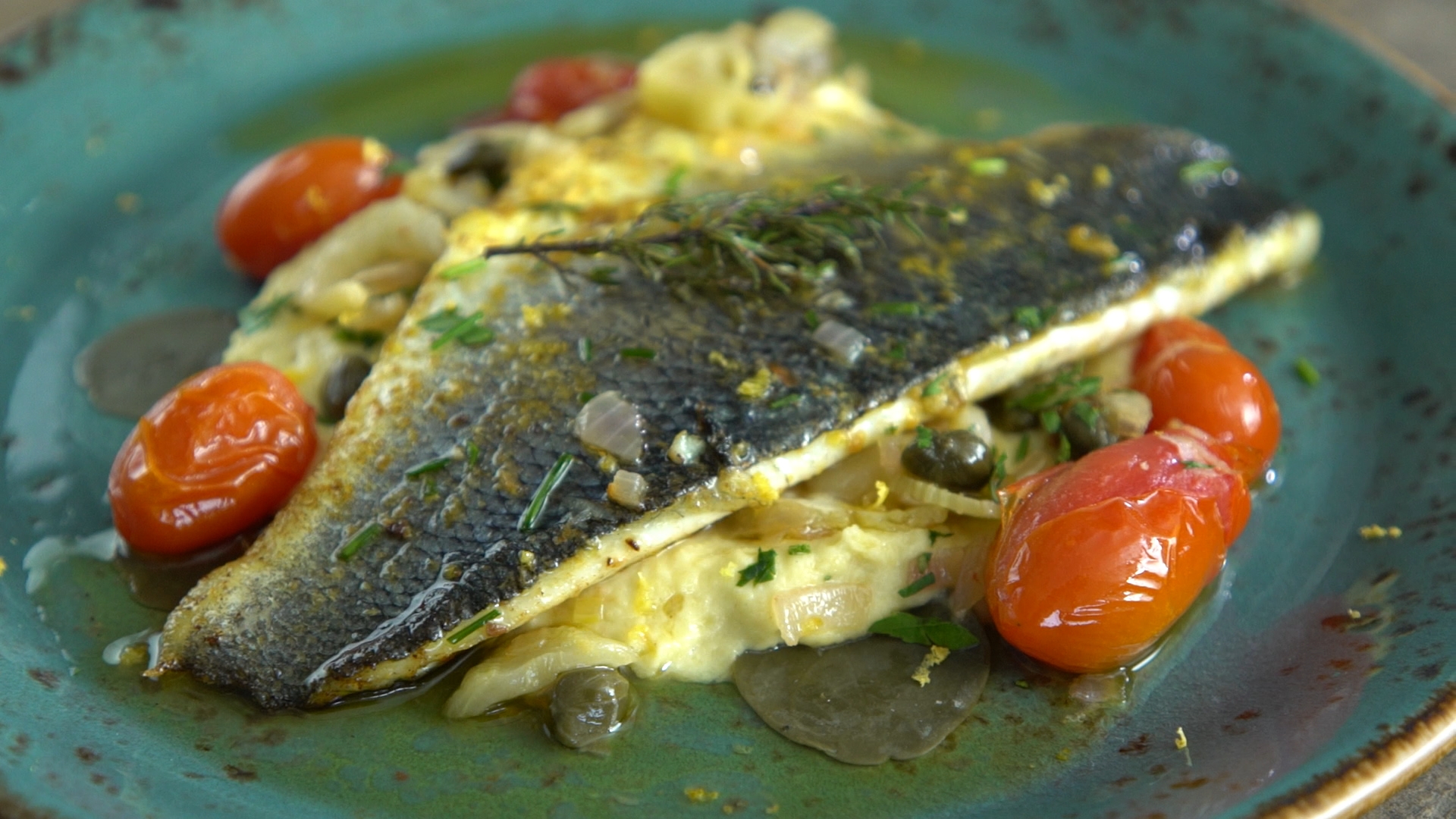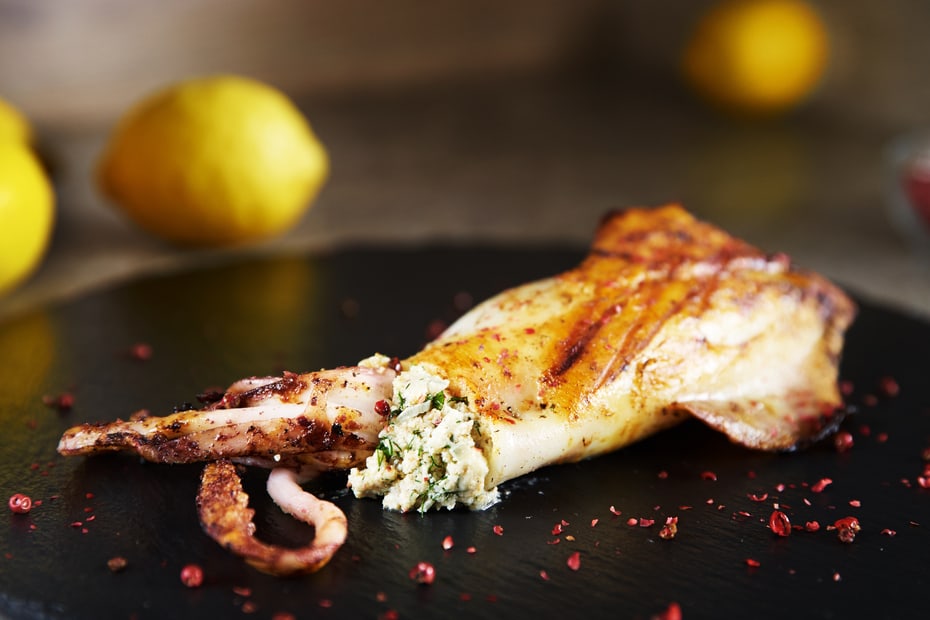For me, sustainability in my cooking is something I think about all the time. As much as is possible, I work to make responsible decisions surrounding the food I cook and consume, reducing waste and, ultimately, doing my part to reduce my impact on the planet! I consider it to be my responsibility to my community and to the environment, and I want to share the tips I’ve learned regarding sustainable practices. Today, I’m focusing on sustainable seafood in Mediterranean cooking, an important issue in Greece, where the diet is so fish-forward.
Selecting seafood that can be safely consumed is critical, and not just from a biodiversity standpoint! The world’s oceans help to employ around 3 billion people, and the diversity of sea life is crucial for developing pharmaceuticals, as well as natural products, that can help improve our lives overall. It poses a threat to public health, as harmful algae and microbes increasingly affect the quality of what we eat, and contaminated oceans can prevent us from safely enjoying the water during hot summer days.
Overfishing is a global issue. In fact, supply around the world is expected to be depleted by 2048 if current practices don’t undergo dramatic changes – and while that number certainly seems to be quite bleak, there is a lot we can do to help, and it doesn’t necessarily entail cutting out seafood altogether. The first, and most important, choice you can make is to buy and cook seafood species that aren’t overfished. You can also select fish and seafood that has been caught in specific ways, and by paying attention to what its effect is on its local ecosystem.
An easy way to start is to see what fish is deemed safe to consume. I like to refer to this list by the Greek organization Archipelago, which breaks seafood down into 3 categories: safe to consume, which is completely sustainable and not overfished; think before you consume, which indicates that the fish you’ve selected could be showing signs of decline, or alternately be recovering from overfishing; and unfit for consumption, with species that could be endangered or overfished. In some cases, it might even be illegal to indulge in this particular fish!
With this categorization in mind, here are some of my favorite recipes for enjoying seafood sustainably:
Dentex
Dentex is well known for having a delicious taste and great aroma, which is why I love it as the fish of choice in this recipe for Fish Steaks with Santorini Capers, Blood Orange, Ouzo & Leeks, a delicious, healthy quick meal that allows the flavor of the fish to really shine.
Sea Bream
Looking for a dish that will take you to the Greek islands in summer, even if vicariously? This recipe for Greek Sea Bass or Sea Bream Baked with Santorini Assyrtico Wine, Capers Leaves, and Herbs is definitely it! Sea bream is known for its meaty taste, with a richness that doesn’t come alongside an overwhelming fishyness. Dense yet juicy, it’s a lovely fish to add to whatever you want to cook. And next to a beautiful mineral white wine from Santorini, plus the island’s famous capers and caper leaves, you’re sure to be transported directly to one of the Aegean islands.
Gavros/Anchovies
Anchovies might be pretty polarizing in many parts of the world, but here in Greece, they’re a perfect way to up the flavor of everyday dishes. My Easy Pasta with Tomatoes, Olives, Capers & Anchovies is a great weeknight fast meal, packed with Greek ingredients including Kalamata olives, Santorini capers, and great extra virgin Greek olive oil. I also love this Linguine with Arugula, Chilli Peppers, Anchovies & Greek Olive Oil, a simple pasta dish that we served many years ago at a small restaurant called Villa Thanassi on Ikaria.
Sardines
To the uninitiated, sardines might seem too similar to anchovies, but they’re actually quite different! Sardines, packed with omega fatty 3 acids and antioxidants, are a favorite fish in Greece. We eat them grilled, fried and baked – and I have plenty of great recipes for sardines. Pan-fried Sardines are always a classic – a simple floured-and-fried fresh fish that belongs to the Athenian Riviera and beyond. It’s something we Greeks do at home all the time. Want to get a touch fancier? Try these Baked Sardines with Ouzo, Tomatoes, Capers, and Lemon, a recipe from season 1 of My Greek Table that was inspired by the flavors of Lesvos island.
Mussels
Mussels are a classic Greek meze, super easy to cook, and a very popular seafood component of the Mediterranean diet. Fortunately, they’re also a sustainable seafood option! In this Greek recipe for Easy Mussels Cooked in Greek Saffron-Pepper-Tomato Sauce, I marry these tasty bivalves with krokos Kozanis, aka Greek saffron.
Squid
Squid is a healthy seafood option that will have you feeling good about eating sustainably. It’s rich in protein, omega-3 fatty acids, vitamin C, iron, and calcium. Most of the health benefits of squid result from omega-3 fatty acids. It also happens to feature prominently in the Greek recipe repertoire. I love this slightly modern Salad with Squid and Vegetables, but if you’re looking to go more classic, you absolutely can’t miss with this Baked Feta-Stuffed Calamari. It’s a taverna classic and one often found in the seaside fish eateries along the Athenian Riviera!












